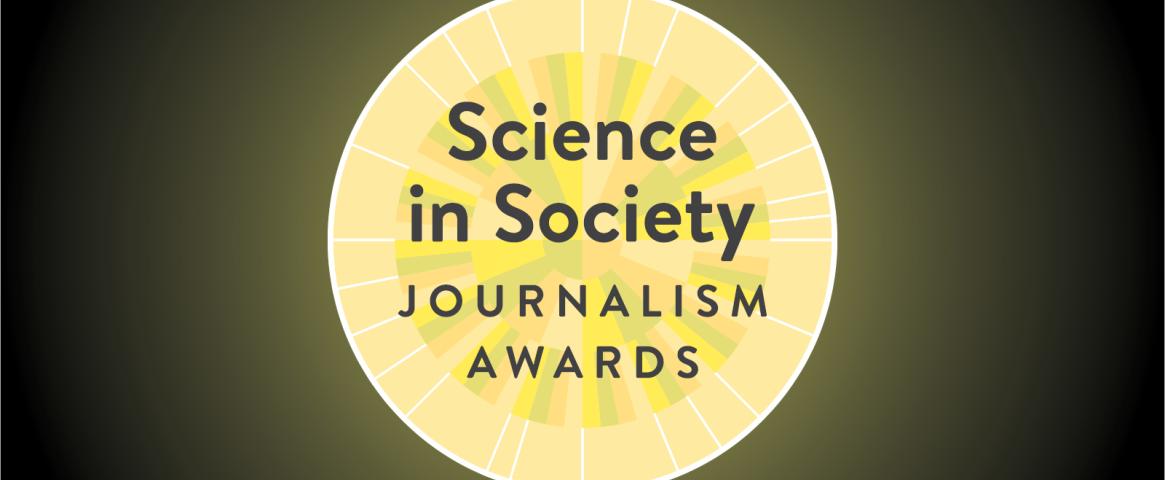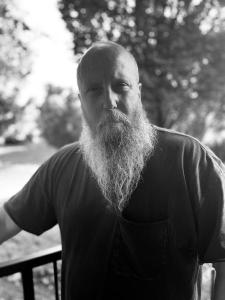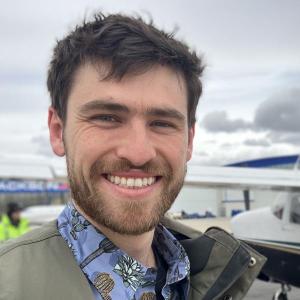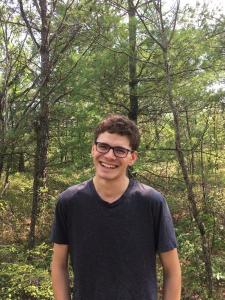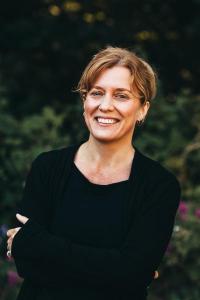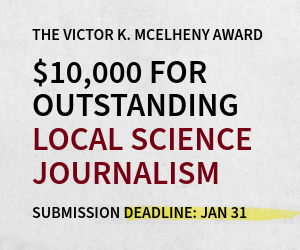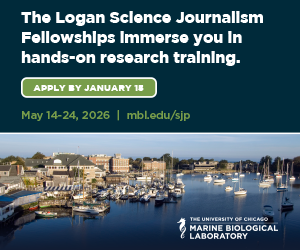Sept. 30, 2025
The National Association of Science Writers and its Awards Committee are pleased to announce the winners of the 2025 NASW Science in Society Journalism Awards. This year, NASW is awarding prizes in six categories: Books, Science Reporting, Science Features, Longform Narratives, Series, and Commentary. The winners are:
- In the Books category, The Cancer Factory by Jim Morris, executive director and editor-in-chief at Public Health Watch, published by Beacon Press.
- In the Science Reporting category, “Dire straits for the Panama Canal” by science and environmental journalist James Dinneen, for New Scientist.
- In the Science Features category, “This father built a gene therapy for his son. Now comes the harder part: saving others’ children, too” by Jason Mast, general assignment reporter for STAT.
- In the Longform Narratives category, “This Grim but Revolutionary DNA Technology is Changing How We Respond to Mass Disasters” by independent journalist Erika Hayasaki for MIT Technology Review.
- In the Series category, “Coercive Care” by Eric Boodman, general assignment reporter for STAT.
- In the Commentary category, “The Digital Planet” by science and environmental journalist Michelle Nijhuis for The New York Review of Books.
The award winners in each category will receive or share a cash prize of $2,000. The 2025 NASW Awards will be presented on Sunday, Nov. 9, in Chicago, Ill., as part of the ScienceWriters2025 national conference.
Praise for the 2025 Books Winner: Published by Beacon Press in November 2024, The Cancer Factory by Jim Morris is an in-depth chronicling of one of the worst occurrences of workplace-related cancer in the United States. For decades, workers at a single Goodyear plant in Niagara Falls were regularly and knowingly exposed to deadly carcinogenic chemicals, which resulted in a large cluster of bladder cancer cases.The judges describe The Cancer Factory as a searing indictment of systemic injustice, with Morris drawing upon many decades of reporting to reveal a pattern of corporate deception and regulatory failure. “Blending meticulous investigation with gripping storytelling, Morris exposes one of the most devastating (and one of the most underreported) occupational health crises in American history,” the judges said. “With safety regulations facing renewed threats, The Cancer Factory is, tragically, more timely than ever.”
Praise for the 2025 Science Reporting Winner: Published in the Feb. 10, 2024, issue of New Scientist, “Dire straits for the Panama Canal” by James Dinneen explores how climate change has affected water levels in the waterway’s central lake, slowing ship traffic and highlighting the urgent need for an innovative upgrade.“A difficulty of covering climate change is illustrating this catastrophic phenomenon that is invisible to the human eye,” the judges said. Dinneen “overcomes this barrier by focusing on climate change's impacts. The story braids together the visible impacts of long-term drought on the Panama Canal with the climate science that undergirds the drought, and the economic and social consequences if we allow climate change to continue unchecked.”
Praise for the 2025 Science Features Winner: Published Dec. 9, 2024 in STAT, “This father built a gene therapy for his son. Now comes the harder part: saving others’ children, too” by Jason Mast is the story of Terry Pirovolakis, a 45-year-old former IT professional who championed a cure for his son’s rare genetic disease and became a beacon for other such families.
The judges praised the story for deftly layering Pirovolakis' quest for a treatment for his son with a drug development system that views such disorders as not being profitable enough to treat, and his experiences with other families in a similar position. “Mast creates a deeply researched, well written, compelling narrative,” the judges said. “It's one that highlights deep fractures in a drug development system where the ability to generate novel gene therapies outstrips its ability to deliver them.”
Praise for the 2025 Longform Narratives Winner: In “This Grim but Revolutionary DNA Technology is Changing How We Respond to Mass Disasters,” published May 15, 2024, in MIT Technology Review, Erika Hayasaki explores how rapid DNA analysis helped identify victims of Maui’s deadly fires, swiftly bringing closure to grieving families in the wake of the disaster. The technology’s use has become more prevalent with the rise in frequency of catastrophic events.“This story grabs you from the start,” the judges said. “Hayasaki has expertly woven together one family’s harrowing story with a kaleidoscopic examination of genetic identification technology. Along the way, we explore the intersection of science and technology with our new age of increased natural disasters, as well as the cultural experience of those who have every reason to be wary of technological promises made in the name of progress.”
Praise for the 2025 Series Winner: Published in STAT between May and December 2024, “Coercive Care” by Eric Boodman delves into how doctors — even in recent years, despite updated guidelines — have pressured patients with sickle cell disease into unwanted sterilizations, sometimes by misrepresenting the risks.The series is “an absolute triumph of reporting and storytelling,” the judges said. “Boodman’s examination of the sterilization of sickle-cell patients gives an honest account of how policies ostensibly designed to help and protect women have led to far-reaching unintended consequences. The series is full of great stories of individual people, at once harrowing, empathetic and illuminating.”
Praise for the 2025 Commentary Winner: In “The Digital Planet,” published in April 2024 in The New York Review of Books, Michelle Nijhuis builds off of her thoughtful and perceptive review of two books to make the case that digital technologies can help to restore and protect ecosystems.“Nijhuis blends probing insights with vivid storytelling in this masterful exploration of the paradoxes and possibilities at the intersection of technology and ecology,” the judges said. “From zebra-stripe algorithms to satellite-tracked whales, Nijhuis explores the promise and peril of tech-driven environmentalism with clarity, urgency, and imagination.”
In addition to the 2025 Science in Society Award winners, the judges would like to recognize entries that were finalists in the competition:
Finalist in the Books category:
- How To Kill An Asteroid: The Real Science of Planetary Defense by author Robin George Andrews, published by W.W. Norton & Company.
Finalists in the Science Reporting category:
- “Women who are blind play a critical role in identifying possible breast cancers” by freelance journalist Kamala Thiagarajan for NPR’s Goats & Soda.
- “Bats are in trouble. That’s not good for anyone who likes mezcal, rice or avocado” by freelance journalist Whitney Bauck, published in The Guardian.
Finalists in the Science Features category:
- “The sick children of Brazilian agriculture” by journalists Sílvia Lisboa and Carla Ruas, published in Dialog Earth.
- “Doctors Said These Women’s Mutated Genes Wouldn’t Harm Them” by independent science journalist Roxanne Khamsi, published in The Atlantic.
Finalists in the Longform Narratives category:
- “The Cloud Under the Sea: The invisible seafaring industry that keeps the internet afloat” by investigations editor and feature writer Josh Dzieza, published by The Verge.
- “The Other Side of the World’s Largest Dam Removal” by independent journalist and author J.B. MacKinnon, published in Hakai Magazine.
Finalists in the Series category:
- “The Rationality Wars,” a season from Cited Podcast, by lead producer, host, and editor Gordon Katic and producers Marc Apollonio, Jay Cockburn, Alec Opperman, and Nadeen Shaker. The complete list of credits can be found here.
- “Fast and Fatal” by investigative reporters Jennifer Gollan and Susie Neilson, published by the San Francisco Chronicle.
Finalist in the Commentary category:
- “Brains, biases and amyloid beta: Why the female brain deserves a closer look in Alzheimer’s research” by Rachel Buckley, an associate professor of neurology at Massachusetts General Hospital and Brigham and Women’s Hospital, published by The Transmitter.
The NASW Awards Committee is co-chaired by Charna Albert (College of American Pathologists) and Aparna Vidyasagar (freelance). The Science in Society Journalism Awards were coordinated by Vidyasagar and Awards Coordinator Kate Travis (Retraction Watch), with the final judging committee consisting of Seth Mnookin (MIT), Michael Moyer (Quanta Magazine) and Kendra Pierre-Louis (freelance).
In addition to the final judging committee, NASW thanks the volunteers who served on the preliminary judging committees: J.D. Allen (Stonybrook University), Viviane Callier (freelance), Anne Connor (Johns Hopkins University), Liz Devitt (freelance), Courtney Donahue (freelance), Jill Gibson (Los Alamos National Laboratory), Marianne Guenot (freelance), Desiree Hagen (KOTZ), Alex Ip (The Xylom), Jyoti Madhusoodanan (freelance), Usha McFarling (MIT), Amy Nordrum (MIT Technology Review), Ranjini Raghunath (Indian Institute of Science), Elliot Richman (freelance), Christina Sumners (MD Anderson Cancer Center), Nancy Volkers (International League Against Epilepsy).
Finally, NASW thanks the volunteers who screened this year’s awards entries: Eric Bender (freelance), Melissa Blouin (freelance), Lisa Chiu (BrainFacts.org), Courtney Donahue (freelance), Robert Frederick (freelance), Cara Giaimo (Atlas Obscura), Meredith Hemphill (North Carolina Department of Public Safety), Robin Marantz Henig (freelance), Alex Ip (The Xylom), Peter Jurich (freelance), Janelle Levine (freelance), Cynthia Mills (freelance), Ben Nathanson (freelance), Ranjini Raghunath (Indian Institute of Science), Mahathi Ramaswamy (AAAS), Jeremy Rehm (Johns Hopkins Applied Physics Laboratory), Ariana Remmel (BirdNote Daily), Elliot Richman (freelance), John Travis (Science), Rachel Zamzow (The Open Notebook).
First awarded in 1972, the NASW Science in Society Journalism Awards were established to recognize investigative or interpretive reporting about the sciences and their impact on society. Intended to encourage critical, probing work that would not receive an award from an interest group, NASW presents these journalism awards without subsidy from any professional or commercial interest. The annual Science in Society Journalism Awards honors have highlighted innovative reporting shaped by a diverse variety of perspectives — going well beyond the research findings and considering the associated ethical problems and social effects. The awards are especially prestigious because they are judged by accomplished peers.
Entries for the next awards cycle, recognizing material published or broadcast in 2025, are due Feb. 1, 2026. Entry forms will be available at https://www.nasw.org/awards/sis beginning December 2025.
All NASW awards strive to showcase timely coverage and exemplary work, particularly those by underrepresented creatives tackling diverse, overlooked issues and communities. Judges especially consider diversity in topics, sources, audience, and authors to be a critical component of excellence. Nominations are not limited to the NASW membership, and media professionals are encouraged to submit entries on behalf of peers, colleagues, and mentees.
Founded in 1934 with a mission to fight for the free flow of science news, NASW is an organization of ~2,400 professional journalists, authors, editors, producers, public information officers, students and people who write and produce material intended to inform the public about science, health, engineering, and technology. To learn more, visit www.nasw.org and follow NASW on LinkedIn and Bluesky.
